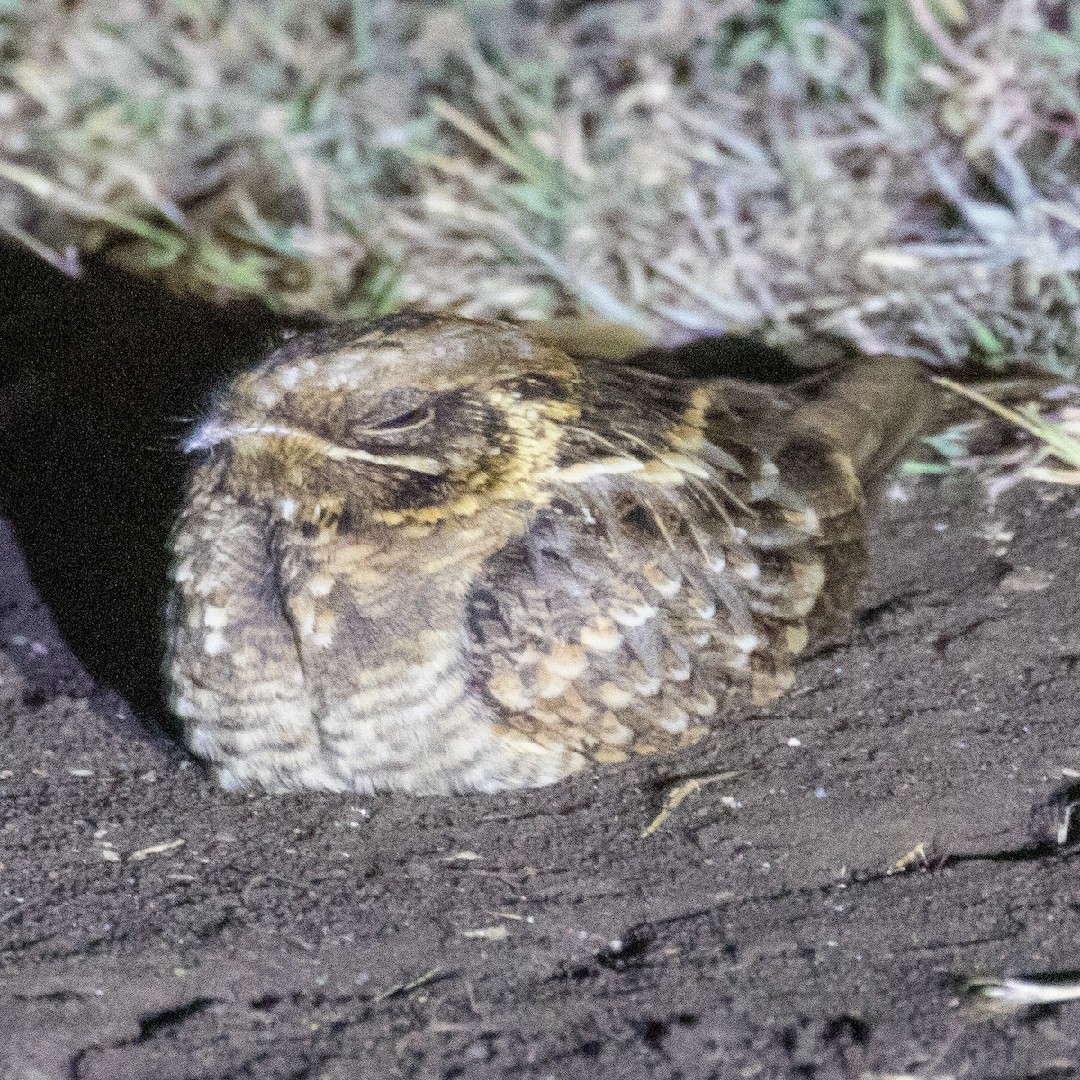Indian Nightjar
A species of Old World Nightjars Scientific name : Caprimulgus asiaticus Genus : Old World Nightjars
Indian Nightjar, A species of Old World Nightjars
Botanical name: Caprimulgus asiaticus
Genus: Old World Nightjars
Content
Description General Info
 Photo By Steve McInnis
Photo By Steve McInnis Description
This nightjar is small and short-tailed with white corners to the tail, a golden nape and collar, dark cheeks and white patches on the sides of the throat. The crown is grey and the breast is finely barred in brown. The males have more white on the tail while the female is more heavily streaked on the crown. It is differentiated from Sykes's nightjar by the dark undertail and from Jerdon's nightjar by the shorter tail and white patches on the sides of the throat. The call is distinctive and has been likened to a stone skipped on a frozen lake (due to which it was also called the "ice-bird" in colonial India) or a ping-pong ball bouncing rapidly and coming to rest. It flies after sundown with an easy, silent moth-like flight. During the day, Indian nightjar lies still on the ground, concealed by its plumage; it is then difficult to detect, blending in with the soil. 
Size
24 cm
Nest Placement
Ground
Feeding Habits
Indian Nightjar primarily consumes flying insects like mosquitoes, beetles, and moths. They feed near dawn and dusk, capturing prey in flight with their bills, or foraging from the ground or plants. Occasionally, they eat larvae and eggs. Unique to indian Nightjar is feeding near artificial lights and livestock, taking advantage of insect swarms.
Habitat
The habitat of indian Nightjar is diverse, predominantly inhabiting scrublands and wooded regions. They favor environments with light scrub, bamboo patches, newly established plantations, and areas with intermittent foliage and hedges, such as euphorbias. Indian Nightjar are also found in stony watercourses near agricultural land and neglected gardens. The species shows adaptability to low hill terrains with sparse thorn scrub, stony hillocks, and flat regions scattered with salt-tolerant tamarisk shrubbery. Additionally, indian Nightjar inhabits sandy jungles, open woodlands, and plantations across broad lowland plains.
Dite type
Insectivorous
General Info
Feeding Habits
Bird food type
Distribution Area
The species is found in open woodland, scrub, and cultivation. It usually sits on the ground or low trees and is not found on high perches. The species is found from northwestern India and adjoining parts of Pakistan but not found in the arid desert region. It is found south of the Himalayas in the low elevations east to Bangladesh, Myanmar and Vietnam. It is also found in Sri Lanka. No nest is made; the two beautifully marbled creamy pink eggs are placed upon the bare ground during February to September; the brooding bird, sitting closely, is well camouflaged. Eggs may be moved short distances. The newly hatched chick is covered in down with brown above and light rufous below. The eye is open on hatching and the chick can sit upright and make a weak sound. 

 Photo By Steve McInnis
Photo By Steve McInnis Scientific Classification
Phylum
Chordates Class
Birds Order
Nightjars and Relatives Family
Nightjars and nighthawks Genus
Old World Nightjars Species
Indian Nightjar